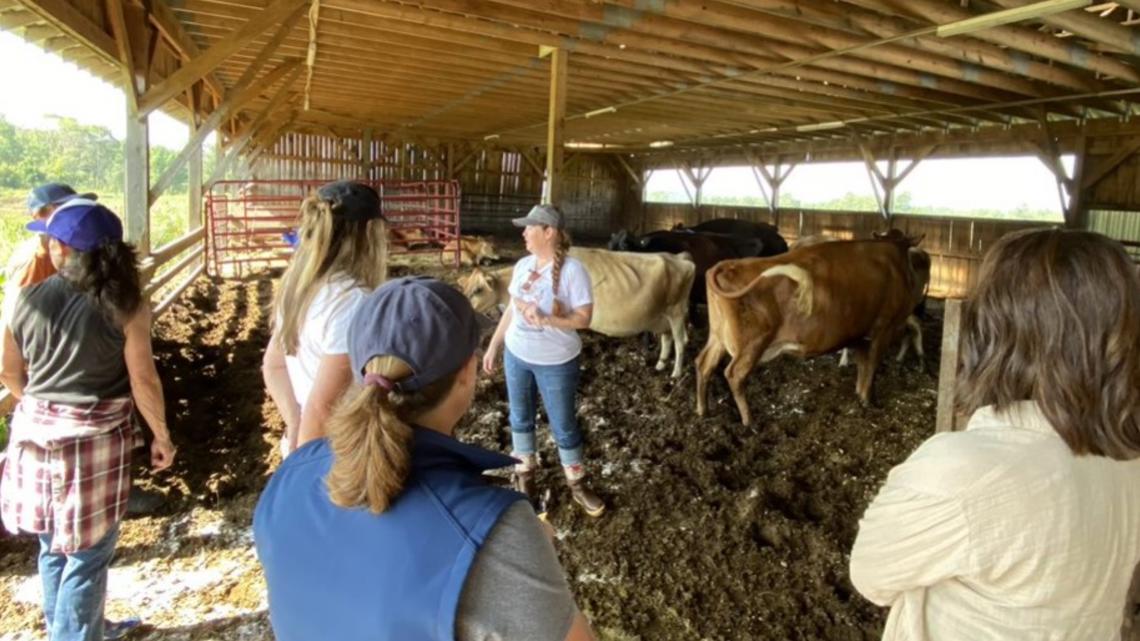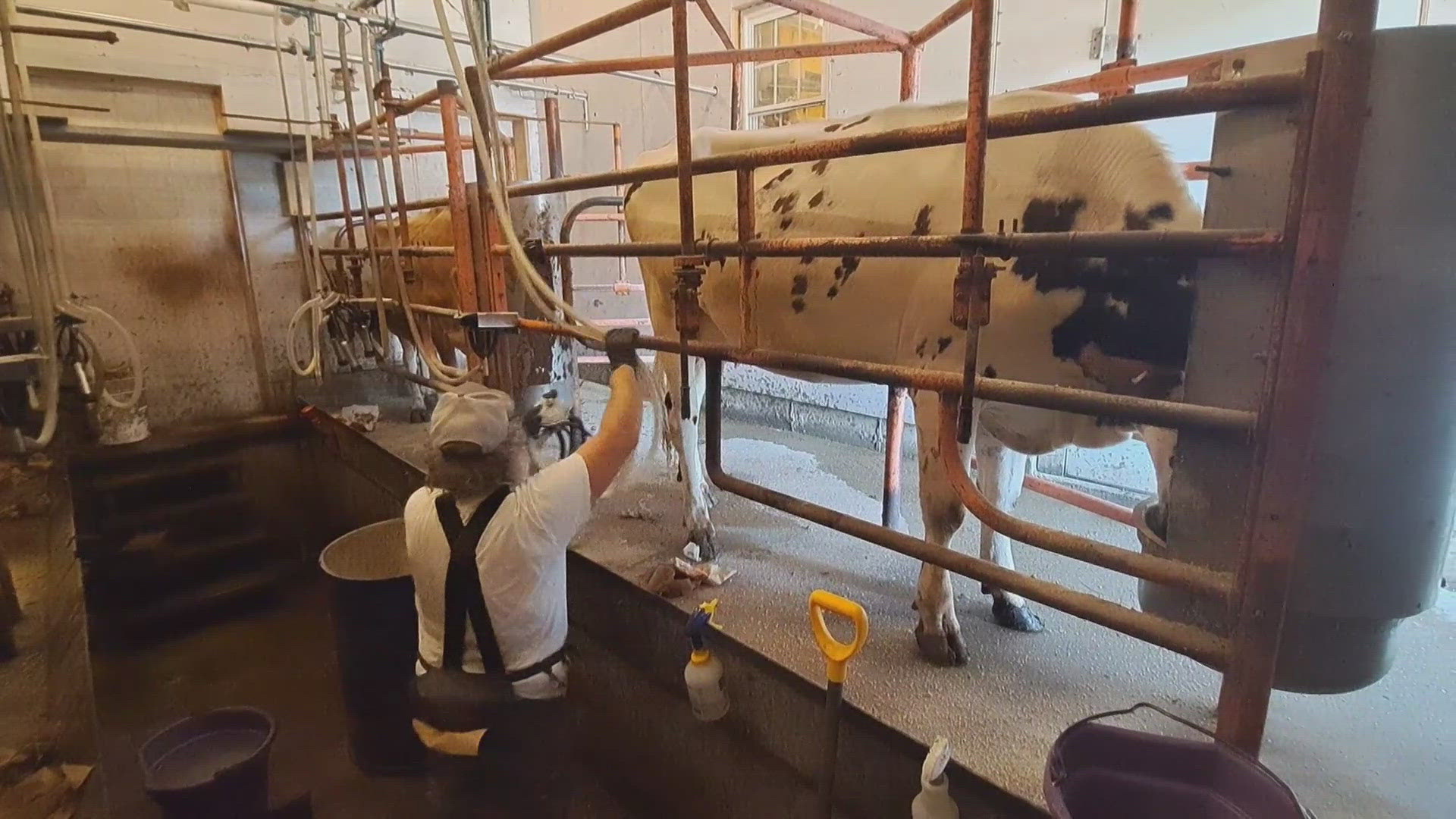THOMASTON, Maine — The huge farm field spreads out over a small rolling hill, acre after acre of thick clover.
For dairy cows, it's a feast in waiting.
That field has also required a tremendous amount of work for dairy farmers Gregg Stiner and Rhiannon Hampson. They bought the property five years ago, when it only had a house and some overgrown fields. The couple had to build a barn for their herd and clear fields to grow feed to make their farming dream a reality.
Hampson and Stiner share a love for dairy farming and a strong desire to make a small-scale farm work. The University of Maine Cooperative Extension thinks its example can inspire other potential farmers, so it's using the Grace Pond Farm to show what’s possible.
"I see a lot of people getting into dairy farming are doing it how Rhiannon and Gregg are, finding niche markets for their milk," Chris Howard of the Cooperative Extension said.
Most of Maine’s dairy farms—with only about 140 still in business—are larger, with many cows, sometimes hundreds. Grace Pond Farm, by contrast, is currently milking just 17 cows.
Hampson and Stiner said their organic farm has found niche markets for their milk.
"There is a market, and I would assert there is room for others to be doing it at this scale as well," Hampson said. "We actually can’t meet the market need ourselves at our size."
She said there are small creameries making cheese and others making yogurt, in various parts of the state, that need local farms to provide milk.


However, their small operation alone can’t generate enough income to make the farm profitable. That has required the farm to diversify and add products.
They raise hundreds of chickens in the field, where they eat grain and grass to grow to market size.
The farm also raises pigs, which have helped to clear the fields of stumps and bushes, so the soil can be planted with grass and clover. The end result, Hampson told a farm tour, is wide open fields with lush growth.
"We are doing everything we can to hold on here as a dairy," Hampson told the tour group. "Sometimes that means growing more poultry. We grow fantastic chickens, so we aren’t sad about doing that."
She then made the point that diversifying the farm has been essential to its survival.
Also essential is off-farm income. Hampson works full-time as state director of the USDA Rural Development office, helping administer its federal programs around Maine. She works on the farm in off hours, but the primary farmer is her husband, Gregg, with help from their 13-year-old son.
Howard of the UMaine Cooperative Extension said most Maine farms also require an off-the-farm income source to survive.
Despite the obstacles, Howard said there are several hundred people in the state who have told the UMaine Cooperative Extension they’d like to raise livestock, including small-scale dairy farming. The hope is that some of them, at least, will take the jump and begin farming, to help sustain dairy farming in Maine.
Hampson and Stiner said they need more farmers, like themselves, to keep the industry viable. Tours for would-be farmers are part of it.
"We try to get as many people on the farm as possible so they can see the value in it and maybe be excited enough to do it themselves."

